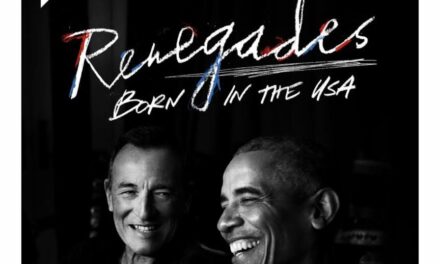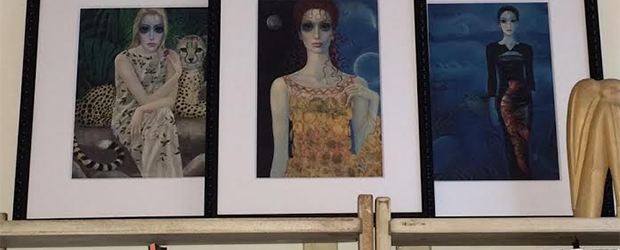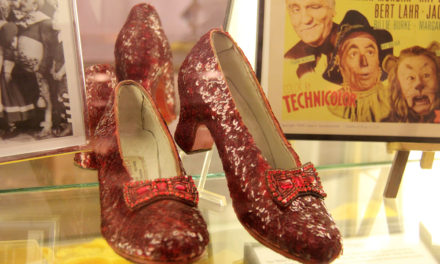
Not so much the basic story or the music, but the social message and the juicy sarcasm.
Because almost immediately it was clear, as my friend Mirna noted at intermission, that what was unfolding before us was Cinderella “with a twist.”
The twist, as it happens, was an emphasis on kindness. Cinderella, we learn immediately, is extraordinarily kind. I’d go so far as to say she’s a bleeding heart. She is all about the disenfranchised and wants them to be heard. Before she even knows who the prince is, she is drawn to his innate kindness and graciousness in an encounter in the forest.
That sets up a dynamic where you root for them to get together and you know they will because it is, after all, Cinderella, but it’s coming from a deeper place. He is seeking meaningful and he sees it in her; they make each other better people because of what they see in each other. In this scenario, the idea of him selecting a bride based on how she looks at the ball feels less shallow. While it’s still a fairy tale, it’s a much broader message.
The dialogue involving the stepmother and the stepsisters is mean in a funny way. It’s despicable that the stepmother is materialistic, but we laugh at how plain-spoken she is about it and we never envy her baubles. We laugh because she doesn’t seem to get how awful she is.
Actor Paige Faure’s Cinderella is no pushover cashing in on her exterior beauty. When she runs from the ball before the clock strikes midnight and her glass slipper falls off, she quickly retrieves it and keeps running. The prince is devastated. Those of us who know the story are wondering how he will find her if she doesn’t leave the shoe behind. What’s happening here?
In his desperation and after a fruitless search, the prince plans a banquet and invites all the women in the kingdom again. Cinderella shows up, but again must exit before midnight as per the orders of her fairy godmother. This time as she’s running out he begs her not to disappear again. She looks at him pointedly, removes her shoe, and places it on the step before running away. In this scenario, it is a confident woman issuing an audacious challenge — go ahead and find me — as opposed to the conventional version featuring a helpless girl fretting and fleeing.
I was stunned.
Earlier in the play, while it would have been easy to get caught up in the dazzling gowns and sweet choreography of the ball scene, I was particularly amused at one bit of dialogue. When the prince is dancing with one of the stepsisters and asks about her interests, she says she’s interested in whatever he’s interested in; this (blessedly) interests him not at all.
I have a book on my shelf called Cinderella on the Ball, Fairytales for Feminists and in it there’s a story written from the point of view of the stepsisters. It’s called “The Ugly Sisters Strike Back” and it empowers them as not conventionally attractive but learned women who are socially aware and have no tolerance for the shallow, girlie, fake-tanned Cinderella.
It feels unfortunate that this is a ‘feminist’ version in that it pits women against each other rather than encouraging them to celebrate themselves and their differences. The righteousness of the stepsisters feels even crueler in this version than the one where they order Cinderella to wait on them in the conventional story.
The great poet Anne Sexton famously wrote poems based on fairy tales, one of which was Cinderella. She ends her verse this way:
Cinderella and the prince
lived, they say, happily ever after,
like two dolls in a museum case
never bothered by diapers or dust,
never arguing over the timing of an egg,
never telling the same story twice,
never getting a middle-aged spread,
their darling smiles pasted on for eternity.
Regular Bobbsey Twins.
That story.
While I applaud Sexton and her message and the fairy tale trends she was bucking, this doesn’t have the same sting after watching the story I just watched on Broadway. It was sappy, but not as one-dimensional as the version I grew up watching and reading.
Sure, there was delight and magic in the fairy godmother. She is about belief, faith and what’s possible. But the substance stood out among the fantasy. Near the end Cinderella says these words to her stepmother — I forgive you. Plus, this story wasn’t about a man choosing a woman but about a man and woman choosing each other.
Ahhhhhhhh.
It left me wanting a fairy godmother and the kind of prince who finds me worth pursuing for my kindness knowing that is the source of my radiance.
I hope some of those little girls in the audience got a smidgen of that message.





